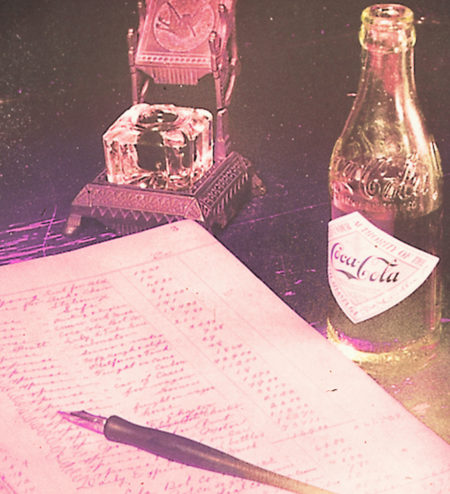As our world becomes increasingly more digitized and most, if not all, of our communication takes place via keyboards and screens, the fine skill of cursive handwriting seems doomed to the trash heap. That loss would be a sad one, to be sure, considering how a simple cursive script has helped to shape the world of visual advertising. Don’t give up on cursive handwriting just yet!
Humble Origins
The Coca-Cola Company has a soft spot for cursive script, as the ubiquitous logo known around the world has shown. You know, of course, the world-wide presence of the logo. What you might not know, however, is just how humble the origins of that logo actually are.
Spencerian Script
The cursive style that we recognize as the Coca-Cola logo is essentially a slightly modified version of Spencerian script. This form of handwriting was developed in 1840 by Platt Rogers Spencer. The distinctive oval-based penmanship style was intended to be a quick, neat, and easy form for business and personal correspondence.
Spencer set up schools to teach the style, then those students went on to establish schools of their own. By the late 1800s, the Spencerian Script was basically the standard for business communication. That’s how Coca-Cola ended up with it.
Frank Mason Robinson
The easily recognizable Coca-Cola logo was not the brainchild of some marketing and advertising genius. Instead, it’s the simple handwriting of Coca-Cola creator John Pemberton’s bookkeeper, Frank Mason Robinson. It makes sense that a business-oriented guy like Robinson would utilize the same handwriting that he used for everyday correspondence and records keeping. Robinson drafted the script in 1885.
Virtually Unchanged
Aside from a brief window in 1890, the Coca-Cola logo has remained virtually unchanged since Robinson wrote it out in 1885. Slight modifications to the lettering and an overall standardization of the script are the only noticeable changes. Otherwise the original writing looks almost identical to the logo that continues to appear on Coca-Cola products and merchandise.
Brush Up On Your Handwriting
The next time you feel the need to rattle off a message with your thumbs on a smart-screen, remember the humble Spencerian script and maybe dash off a note instead.

